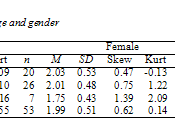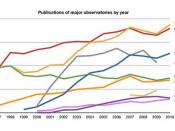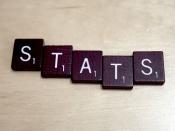The world is filled with uncertainties. Consumer prices, economic fluctuations, political candidate popularity, water quality, portfolio investment management, and everyday decisions, among others, are often ambiguous, unclear, and indeterminate. Statisticians help individuals resolve the vagueness of life by developing characterizations and drawing conclusions surrounding these questions (American Statistical Association [ASA], 2008). Statistics is a division of mathematics that centers on the collection and evaluation of data, which can be drawn upon to make conclusions (Aron, Aron, & Coups, 2006, 2). Two branches of statistics exist, including descriptive and inferential domains. Extrapolation beyond the data is where the real difference emerges. Indeed, these two subcategories vary in function and definition. However, a relationship exists between descriptive and inferential statistics, irrespective of the distinction in purpose and meaning.
The function of statistics is the "collecting, analyzing, presenting, and interpreting of data (Statistic, 2008). Statistics have become a valuable tool that many fields use which include but are not limited to business, healthcare, politics, sports, gambling, and all sciences.
The government census reports that keep track of the population and the economics of everyday life that is played out on Wall Street and the stock market are two examples of where statistics influence every individual. In psychology statistical methods are used on the data collected regarding a theory or question about human and animal behavior in order to discover the truth about the behavior. For example, a research study on the effects of stress levels of a student and how well the student performs on a test. Through the collection of quantitative and qualitative data a researcher uses statistical analysis to make sense of the data collected. Statistics can have both a positive and negative impact. The positive impact would be that the data collected would be translated into information that is useful,


